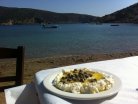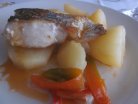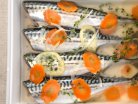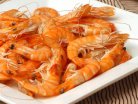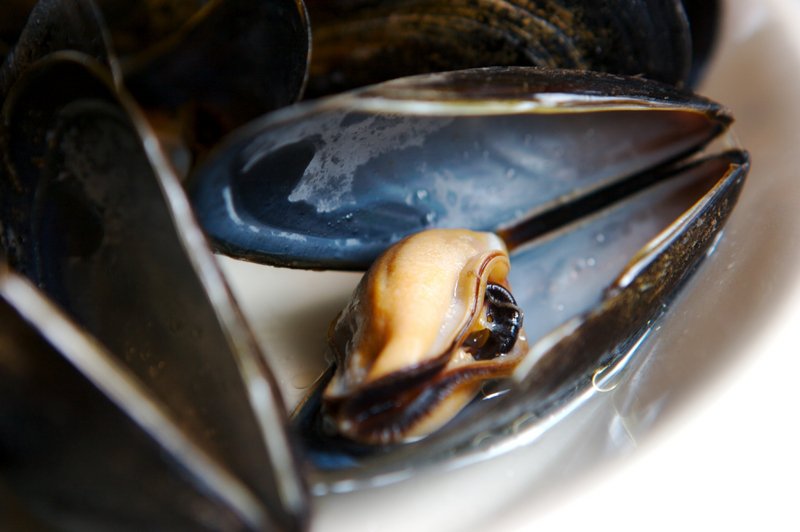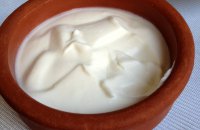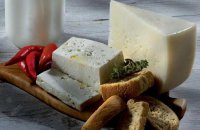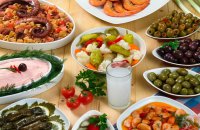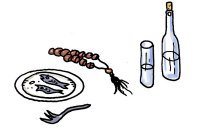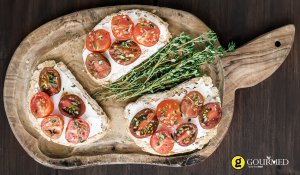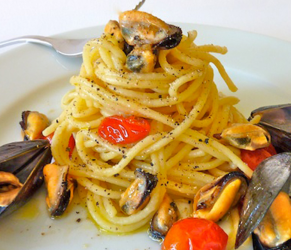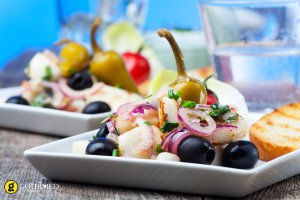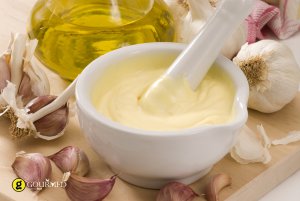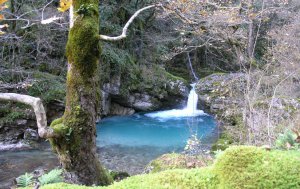Fish grilled whole on the bone makes for one of Greece's most prized, yet simple, meals. Whether octopus or mullet, whether caught on a spear or bought frozen, food from the sea most commonly ends the day seared over hot coals, then topped with a wedge of lemon and a sprinkling of salt.
But, there is also a world of regional dishes found, well, when one goes fishing for them: recipes based on what is abundant in a particular area, flavors and preparations based on local flora, and on the tastes and origins of local populations.
In Salonika, a region that culls most of its seafood from the ample coves and inlets around the Halkidiki peninsula to the east, shellfish is abundant. The Asia Minor Greeks that resettled in the area brought with them their deep appreciation for the mussel, and consequently, the region is known for its mussel recipes of Turkish origin. In Salonika tavernas, two of the best local dishes are mussels stuffed with rice and pine nuts, and mussels simmered with wine or ouzo, tomato, and feta.
Pontian Greeks, who arrived from the Black Sea and settled in the Thracian, Macedonian region of Northern Greece, imported a penchant for the sardine. They bake this delicacy either wrapped in grape leaves or marinated with keels. Another Pontian dish, distinctly Balkan in its flavorings, is fish baked whole on a bed of pickled cabbage.
Indigenous Greeks further inland in Macedonia rely on freshwater fish such as trout or carp from mountain lakes and rivers. Perhaps because such fish is blander than fish from the sea, heady seasoning is common. One popular local preparation, from towns deep in the north such as Kastoria and Serres, is lake fish stuffed or baked with currants, black and red pepper, tomatoes, onions, and sometimes walnuts.
In fact, walnuts and exotic seasoning appear in the fish repertoire of the large majority of northern Greece. Salonika Greeks, for example, flavor carp, fillet of sole, and fish croquettes made from different local fish with a sauce of walnuts, vinegar, and lemon juice. Nikos Stavroulakis, in his book, “Cookbook of the Jews of Greece” (Lycabettus Press, Athens, 1986) offers two interesting recipes, both from Salonika: first, the carp or bass baked with greengage plums, and secondly, the fish fillets baked with white wine and prunes.
South of this region though, Greek regional fish dishes are seasoned with much less intensity. In the Aegean islands, where people have traditionally subsisted on fresh fish and their own garden vegetables, preparations are usually simple. A summer treat on almost every island with a rocky coastline is the sea urchin, plucked with care and eaten raw, save for a squirt of lemon.
Combinations of fish or seafood, especially snapper, bass, and bream, with vegetables such as okra, zucchini, and spinach are common among the islands. On the island of Lesvos, or Mytillene, known since antiquity for the abundance of seafood in its coastal waters, Sunday dinner is usually cabbage leaves stuffed with fish and rice.
In Crete, wild fennel and green olives are added to a simmering pot of either octopus, squid, or cuttlefish. A renown Cretan speciality is the combination of oranges and tomato within a luscious octopus stew.
A peculiar sight on islands large and small is seafood drying in the sun, like leathery wash on the line. In Evia, purple-black octopus stretched taut with clothes pins has become a kind of leitmotif outside local seaside tavernas. Although not sun-dried, butterflied sardines, boned and stuffed with garlic, parsley, lemon and sometimes cheese is another Evian specialty.
On the Cycladic island of Paros, a cousin to the sardine, the gavros, or anchovy, is sun-dried, then grilled; a meze that usually accompanies ouzo.
In Syros, it's not the fish that are dried under the hot Greek sun, but the capers that are to be cooked with it. The capers, along with tomatoes and onions, go into an oven-baked mackerel stew.
In the Ionian islands of Corfu, Cephalonia, and Zakynthos fish dishes often have distinctly Italian names. There's even a transliteration of the Italian aioli in a local garlic mayonnaise from Cephalonia called aliatha, a much-loved accompaniment to fried and poached fish. The two best-known fish dishes of the Ionian islands are the Corfiot Bourtheto, a peppery stew, and the Bianco, another fish stew flavored heavily with garlic.
While there is no dearth of regional fish dishes in Greece, the cooking of seafood is by and large a simple affair. Many recipes are enjoyed in tavernas all over the country, like octopus marinated in olive oil and vinegar, or simmered with tomato and pearl onions. Cuttlefish and spinach stew, as well as fried small fish such as whitebait and picarel, are other national favorites.






